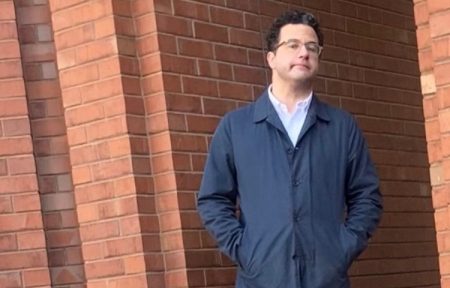From Chart-Topping Heartthrob to Rooftop Maestro: The Unconventional Journey of John Hendy
John Hendy, a name once synonymous with 90s boyband mania and screaming teenage fans, now resonates within the realm of construction sites and roofing expertise. The 53-year-old, who once commanded stages as a heartthrob in the chart-topping group East 17, now navigates a vastly different terrain, trading his microphone for a hammer and his designer wardrobe for work boots. His current reality stands in stark contrast to the glitz and glamour often associated with musical stardom, offering a compelling narrative of a life transformed. Hendy’s journey presents a fascinating exploration of fame’s fleeting nature and the pursuit of genuine contentment beyond the allure of the spotlight.
Hendy’s tenure with East 17, alongside bandmates Brian Harvey, Tony Mortimer, and Terry Coldwell, catapulted him to dizzying heights of fame. The group dominated the charts, their music becoming the soundtrack to a generation. Images of screaming fans, sold-out concerts, and platinum records flash in the collective memory of the 90s music scene. Yet, behind the veneer of success, a different story unfolded for Hendy. In a candid interview, he revealed a surprising truth: his weekly earnings during the peak of East 17’s fame amounted to a meager £125, a sum that incrementally increased by a mere £25 every four months, as dictated by the band’s former manager. This revelation shatters the illusion of instant riches often associated with musical stardom, highlighting the complex financial realities that can exist even at the summit of success.
The stark contrast between public perception and Hendy’s actual financial situation becomes even more pronounced when he acknowledges his lack of home ownership. While many assume the former boyband star amassed a fortune, the reality is far removed from such assumptions. He candidly states, “I haven’t even got a house,” a statement that underscores the disparity between the perceived wealth and the actual financial standing of many artists. His words echo a sentiment of disillusionment with the industry’s financial mechanisms, expressing a sense of injustice that the band members did not emerge from their era of success with at least the security of owning a home.
Despite the financial disappointments, Hendy doesn’t harbor resentment. He embraces his current life as a roofer with a sense of fulfillment, describing himself as the “best of the best” in his field. His battered work van, a symbol of his current trade, stands in stark contrast to the luxury cars often associated with the music industry elite. He recounts instances of arriving at parties hosted by affluent friends, his modest vehicle parked amongst a fleet of Porsches and Range Rovers, a visual representation of the divergent paths his life has taken. While moments of discomfort arise, Hendy chooses to focus on the intrinsic value of his experiences, recognizing the unique journey he’s traversed.
Hendy’s interaction with his wealthy friends provides a poignant perspective on the meaning of wealth and happiness. Their conversations reveal a yearning for experiences beyond material possessions. They acknowledge the unique and invaluable experiences Hendy has accumulated through his time in the music industry, experiences they would readily trade their material wealth for. This exchange highlights the often-overlooked truth that genuine happiness isn’t solely defined by financial prosperity. Hendy’s friends recognize the profound impact of his lived experiences, experiences that money cannot buy.
John Hendy’s story offers a compelling counter-narrative to the often-romanticized image of pop stardom. His journey highlights the precarious nature of fame and fortune, emphasizing the importance of finding fulfillment beyond material wealth. From the screaming crowds and chart-topping hits to the quiet satisfaction of mastering a trade, Hendy’s life has taken an unexpected turn. He embraces his current reality with a genuine sense of contentment, finding value in his hard-earned skills and the tangible results of his labor. His story serves as a reminder that true riches lie not only in bank accounts but also in the richness of lived experiences and the pursuit of a life aligned with one’s true passions. While his days of pop stardom may be relegated to the past, John Hendy’s journey continues, a testament to the enduring power of resilience, adaptability, and the pursuit of genuine contentment.











